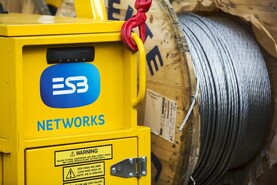New solutions bring new challenges. As we progress toward a net-zero power system over the coming decades, we’re going to see a lot more wind turbines built. A wind turbine can be made up of more than 8,000 parts.
Turbines can have an operational lifespan of up to 25 years, and their outer shell, shafts, gearing, and electrical components, which are typically made from steel, copper, aluminium, and other precious metals, can all be recycled if decommissioned.
However, wind turbine blades present a more difficult recycling challenge due to their composition.
These blades consist of composite materials, which combine reinforced fibres (typically glass and/or carbon fibres) with a polymer matrix. These composites make turbine blades lighter and stronger but are considerably more challenging to recycle.
The composites are non-biodegradable, and while an increasing number of companies offer composite recycling services, these services are not yet widely available or cost-competitive.
In the past, low-cost disposal methods like landfill and incineration were commonly used but are now, rightly so, considered environmentally unacceptable.
A growing challenge
The challenge of what to do with old turbine blades is growing.
Although the current count of decommissioned blades remains relatively low, in Europe’s most advanced wind energy markets the initial turbines are approaching the end of their operational life.
WindEurope estimates that approximately 25,000 tonnes of blades will reach the end of their operational life annually by 2025. Germany and Spain are expected to face the highest number of decommissioned blades, followed by Denmark.
As the decade progresses, Italy, France, and Portugal will also see a significant increase in blade decommissioning, potentially doubling the annual volume to 52,000 tonnes by 2030.
In the United States, this number is predicted to soar to 2.2 million tonnes over the next 25 years. According to researchers from the University of Cambridge, up to 43 million tonnes of waste blades are projected to be generated worldwide by 2050.
Solutions
Irish researchers are at the forefront of finding solutions to this challenge. The Re-Wind Network is a project that is exploring the potential for repurposing end-of-life blades in new urban structures.
A large team from the Georgia Institute of Technology, the MaREI research centre at University College Cork, Queen’s University Belfast, City University of New York, and Munster Technological University in Cork are working on the project.






 This is a subscriber-only article
This is a subscriber-only article










SHARING OPTIONS: